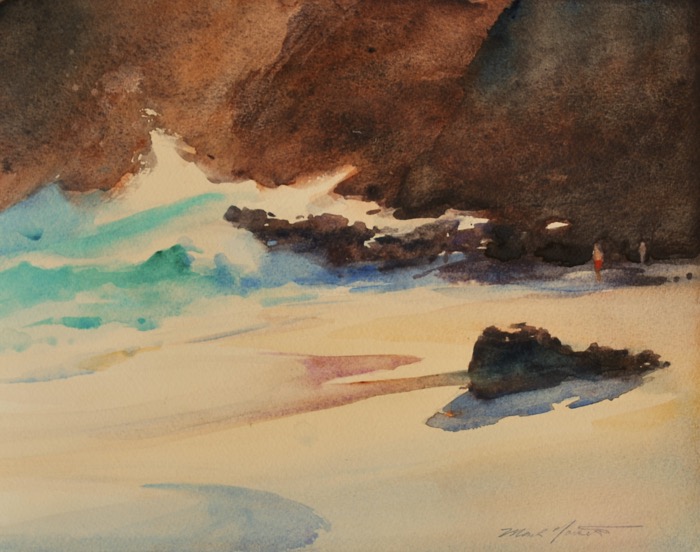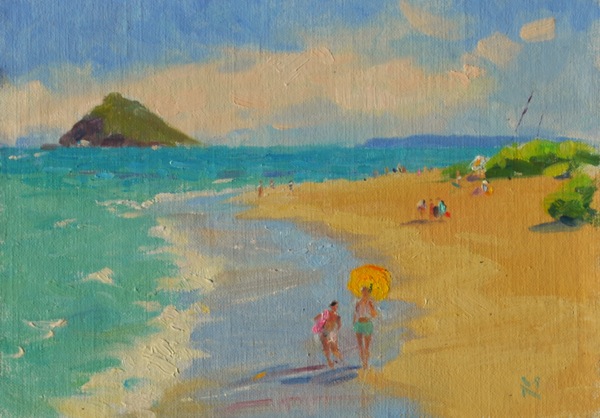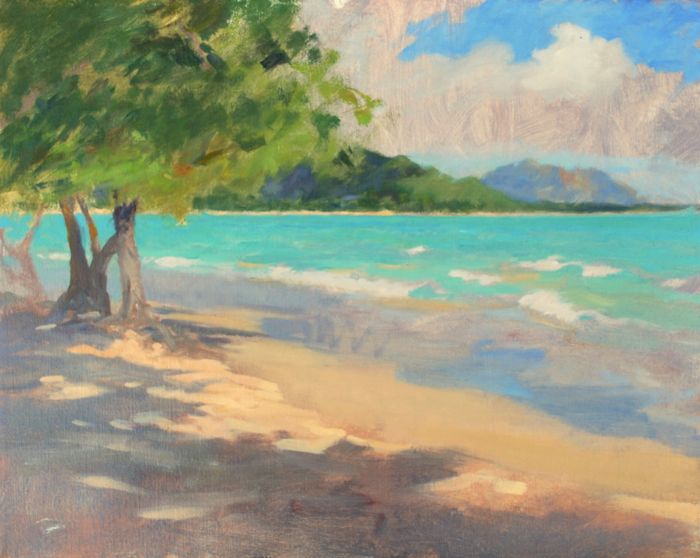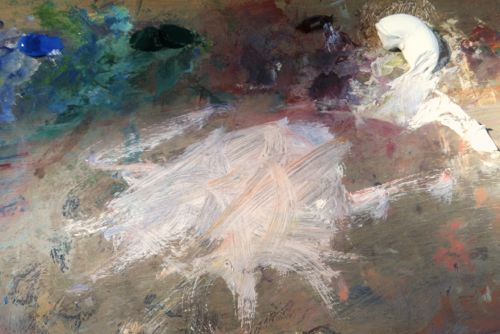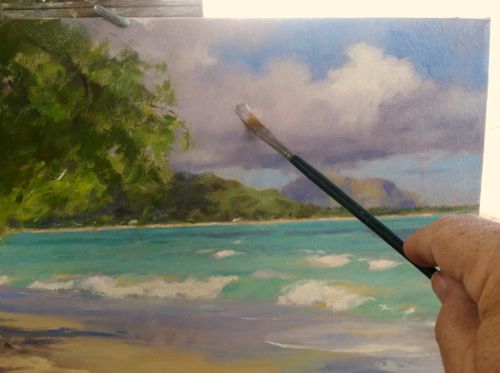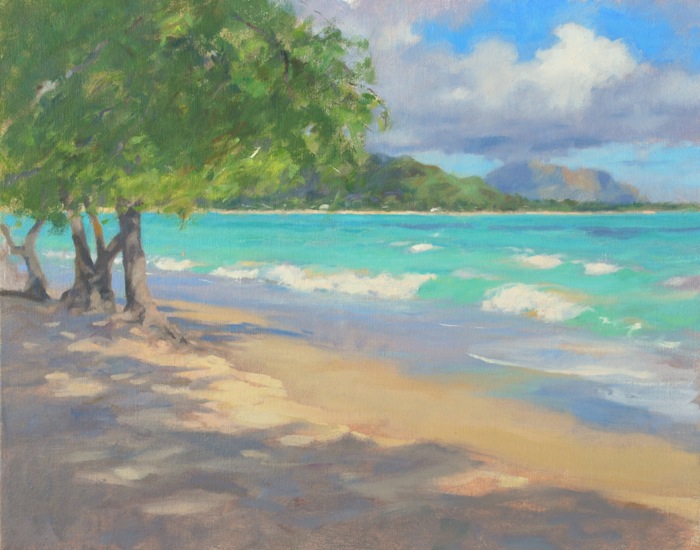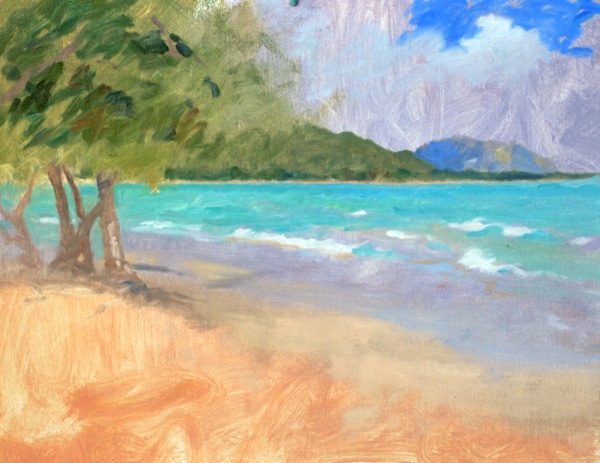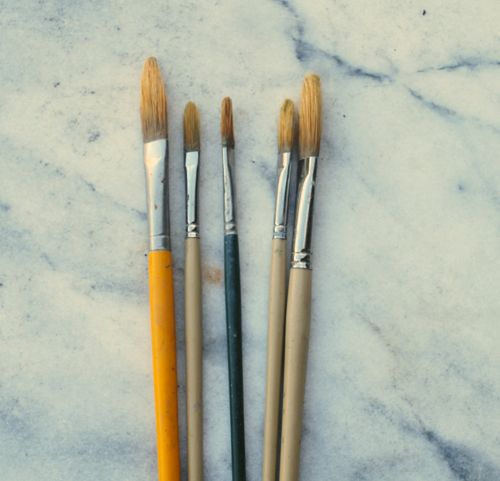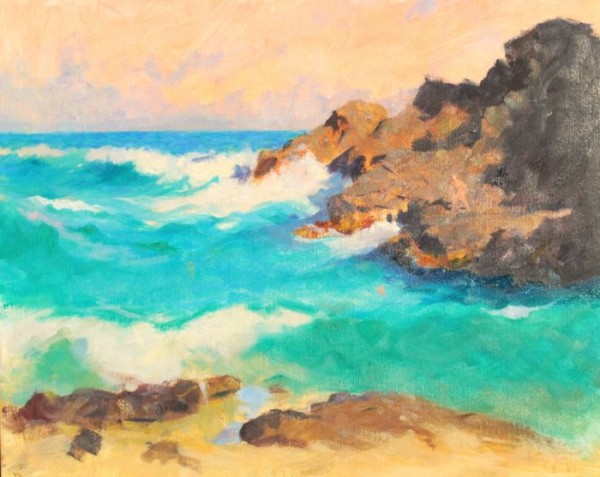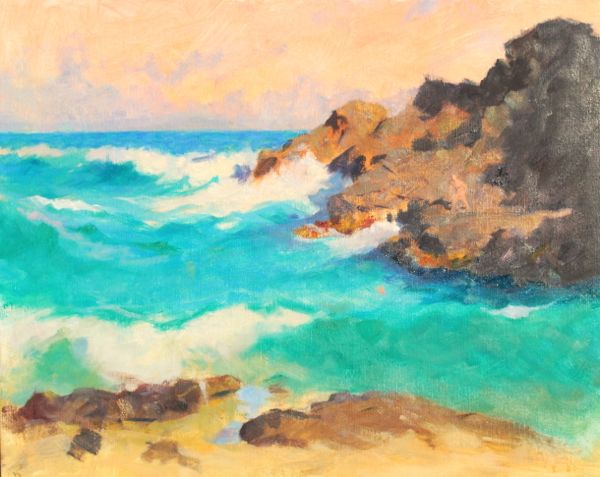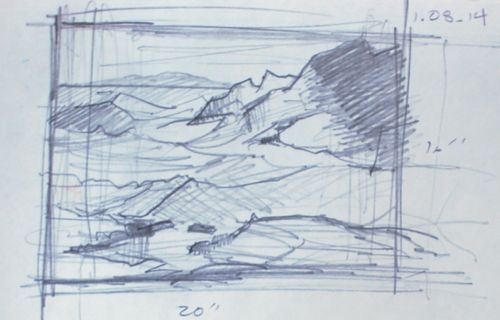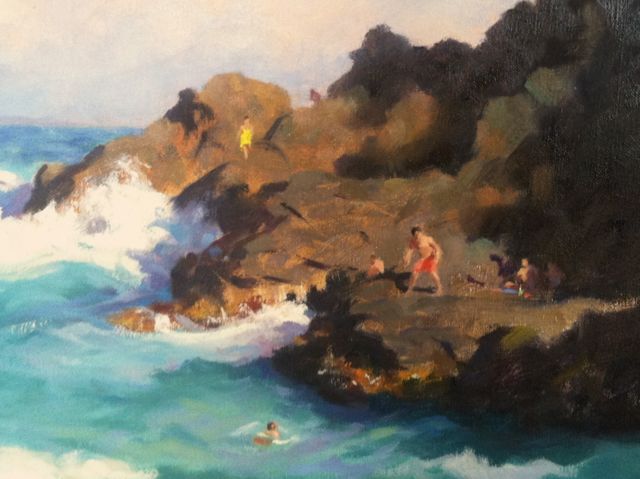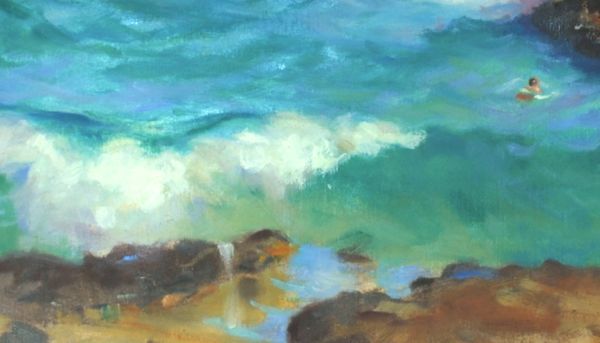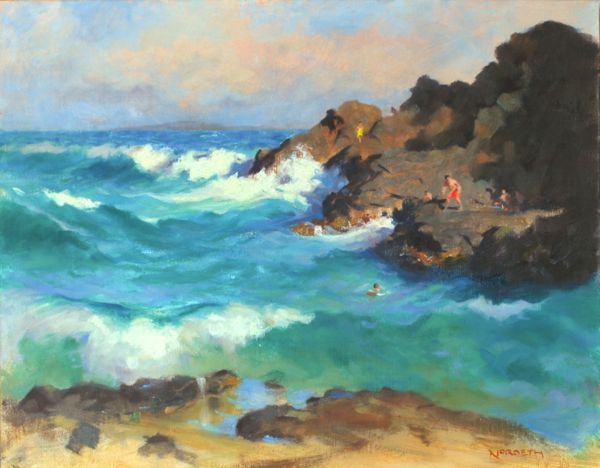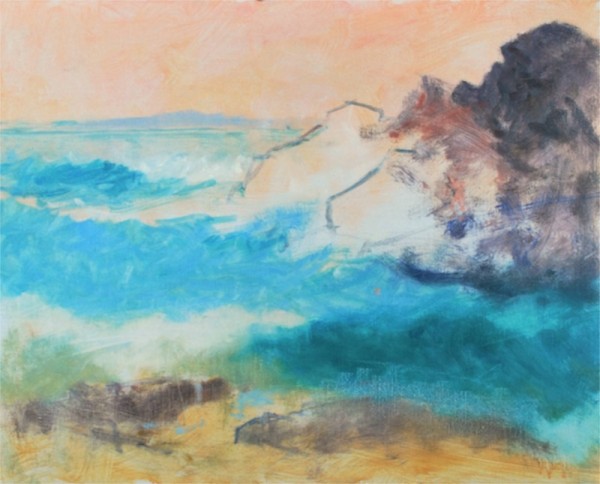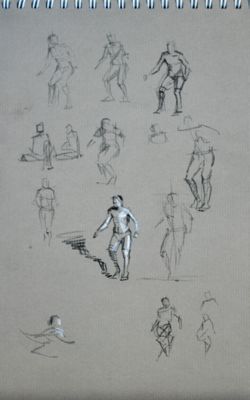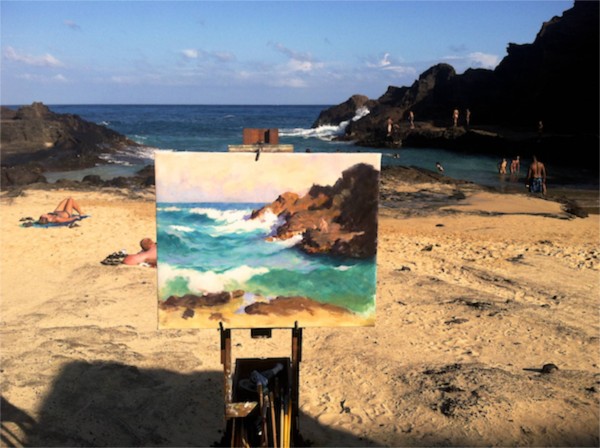This pencil drawing, from my prior post, remains as a solid summary of what I’m after in my final piece.
I’ve relied on it to refresh my memory…in the heat of constructing a night painting, it’s easy to gradually lose oneself along the way. One needs an anchor, a plan, and I’d be lost without it eventually.
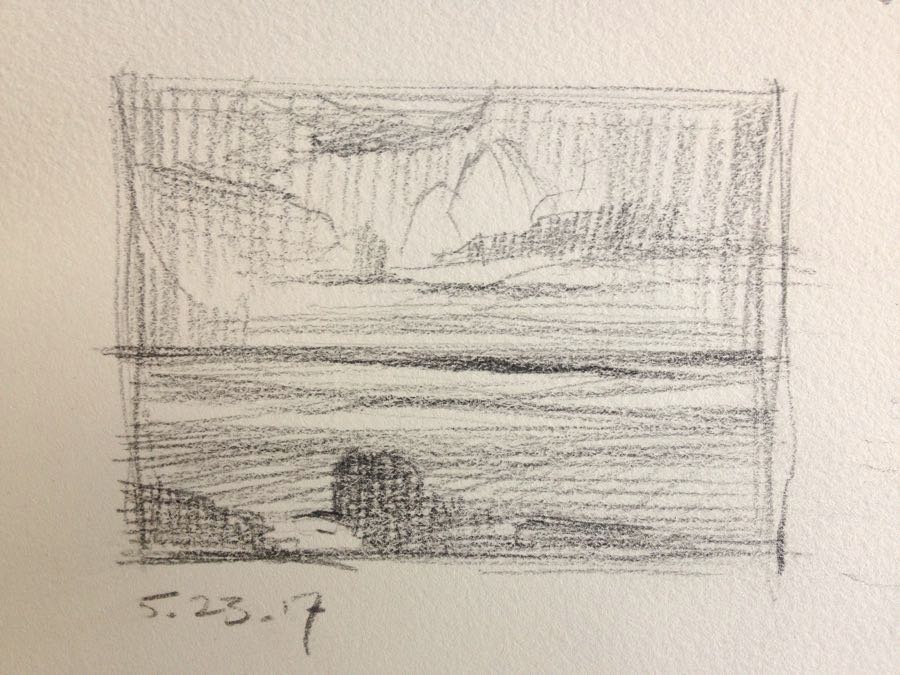
The Essential Question
So, what am I after? It’s hard to know with certainty. It’s not a commercial question, though it’s a given that I’ll be doing my best to make it as beautiful as I possibly can. But there has to be something communicated, something that I see and consider worth attempting to help you to see. And as I progress through these stages of organizing the picture, that’s the thing to be cleared up.
Right now, all I know is that I want to create an emotional response like what I’ve experienced at night, out on those cliffs. And to communicate it clearly to others. I hope that this basic motivation will become more nuanced as I proceed.
The Practical: Finding My Way
One of the particular difficulties is that the final painting must be done in the studio, and from studies that cannot be executed directly from nature. It’s too dark outside. So my “visual memory” must be sharp and reliable enough to put things together. And that’s not a clearly established procedure like some other aspects of painting. I’m finding my way gradually.
At this point I’ve determined that the next step forward, now that the basic color/mood sketch and thumbnail are established, (here), is to make studies of the clouds. They are the most complex and dramatic elements in the painting. Accomplishing this will enable me to work out my composition intelligently.
The Cloud Studies
I painted three main cloud studies from a nearby hilltop over several sessions. I sketched in the ocean beneath for scale.
It’s crucial to decide where the light source is to be in the final painting. I’ve decided it will be the moon, and positioned directly above the view, and out of the canvas. This was established in the thumbnail sketch. This is an important consideration and especially for a night painting. I want the moon outside the canvas because I would like to attempt to suggest it’s effect without including it.
Because of this, I hit upon the idea to paint the cloud studies outdoors at noontime, when the sun illuminating the clouds from directly overhead would replicate the moon at night. I could then paint the forms I saw being created by sunlight on the clouds with confidence that they could translate into the night time effect by adjusting the values.

The cloud studies in order, 11 x 14″ each.

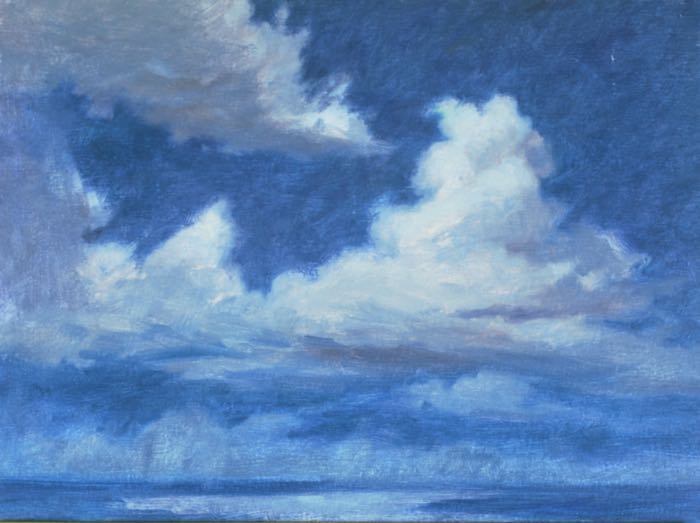
These studies were essential and are extremely useful…not only for a night painting, but as contributing to my general knowledge. I know that work one does from nature, with all it’s hassles, roots itself in an artist’s mind in a unique way. And they were great fun to work on! Forms like clouds need to be rearranged and manipulated to move the eye within the painting; I’ve come to know that clouds are among the most flexible and reactive of the forms occurring in nature. Full of surprises, expressive, and very, very beautiful.
I’ll be springing the final study in my next installment. Mahalo (thank you) from the South Pacific!
Mark


